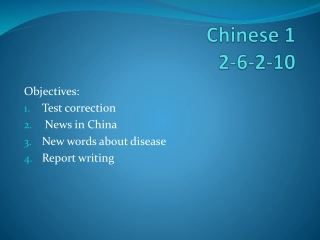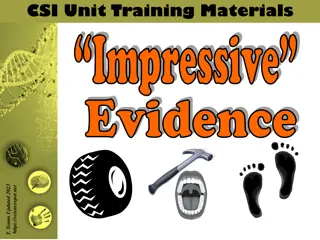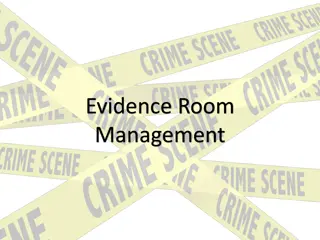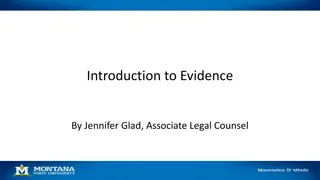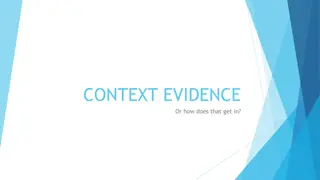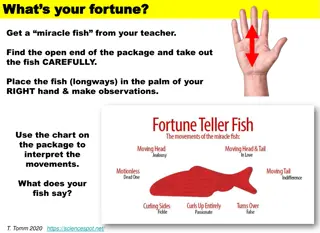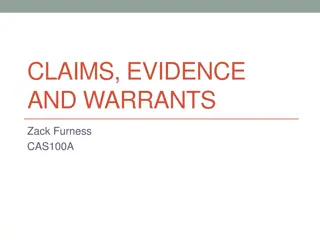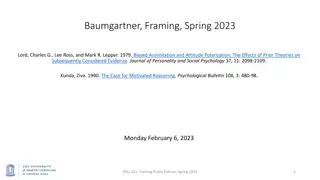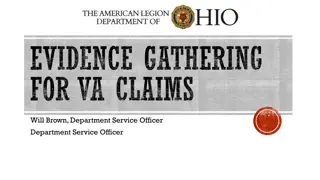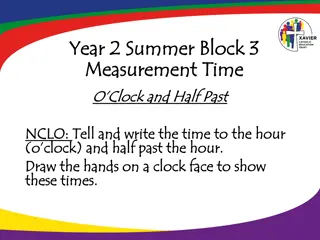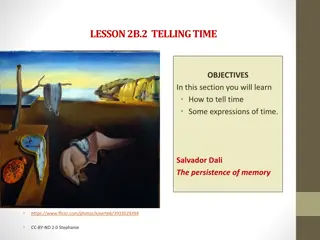Telling Your Story Through the Power of Evidence
Join Claire Khan and Charlie Spencer on April 27th, 2023, as they explore the importance of taking an evidence-based approach to storytelling. Discover the information that underpins stories, review a case study on the potential of YJSF data, and learn how to connect with your local YJS using project data. Gain insights on key performance indicators and strategies for youth justice. Don't miss this opportunity to make an impact and contribute to positive change.
Download Presentation

Please find below an Image/Link to download the presentation.
The content on the website is provided AS IS for your information and personal use only. It may not be sold, licensed, or shared on other websites without obtaining consent from the author.If you encounter any issues during the download, it is possible that the publisher has removed the file from their server.
You are allowed to download the files provided on this website for personal or commercial use, subject to the condition that they are used lawfully. All files are the property of their respective owners.
The content on the website is provided AS IS for your information and personal use only. It may not be sold, licensed, or shared on other websites without obtaining consent from the author.
E N D
Presentation Transcript
Telling your story through the power of evidence Claire Khan & Charlie Spencer 27thApril 2023
Todays Session Why do we need to take an evidence based approach to telling stories? What information underpins the stories we tell? Review a case study to better understand the potential that exists in the YJSF data, both as an individual organisation and as part of a national network How can you use the project data to connect into your local YJS.
Why do we need to take an evidence based Why do we need to take an evidence based approach to telling stories? approach to telling stories?
What What information underpins the information underpins the stories we tell? stories we tell? Additional KPI s conti Out of court disposals Links to wider services Management board attendance Serious violence Victims TURNAROUND SCHEME Additional KPI s (April2023) Accommodation Education, training and employment Existing KPI s Offending rate & frequency SEN, learning difficulties Mental health & wellbeing First Time Entrants Use of custody
Case Study Case Study
Case Study Case Study YJSF DATA Place Manchester (LSOA 1,500 people) IMD 1 IDACI 1 52% of 0-15 year olds in this community are living in relative low income The community is ranked in the 20% (440) incidents/annum) across Manchester for 4 indicators of crime: All recorded crime (GMP) Violent crime, (GMP) A&E attendances by victim home address A&E attendances by estimated location of incident Ambulance call outs due to assault (GMCA, 2021/22) Education data, 68% FMS eligibility, 72% EAL, 25% achieve grade 5 or above in Maths and English at GCSE The population ethnicity (Census 2021) 46% white 20% black 22% Asian 8% mixed 4% other
Case Study Case Study YJSF DATA People Reach 23 young people (YP) engaged Age 58% 15-17 years old , 42% 10-14 years old Ethnicity 57% of cohort were black, 13% mixed, 30% white Gender 84% male Vulnerability (secondary cohort) Excluded from school Arrested in the last 3 months Have been involved in gangs Are in care Pathways 40% YP referred through formal pathways, Youth Justice & Education 60% YP reached the session via informal pathways Non attendance data Phone calls with parents or statutory service Made changes to the group dynamics, made transport available, and changed the time Safeguarding Neglect, behaviour, domestic abuse, bullying
Case Study Case Study YJSF DATA Priority (outcomes) Staff : Young People Delivery Ratio sport (1:10) sport plus (1:4) Average number of sessions attended = 9 (hours to include sport, sport plus & pastoral) Football, basketball, multi-sports, fitness Mentoring, 1:1 youth work, volunteering, food, qualification Engagement Average 1streading = 2.5 Average 2ndreading = 3.1 Achievement: qualifications/ training
The Opportunity Motivate and inspire children onto a positive pathway Impact on the safety and well- being of children and wider communities Inform local youth justice strategy and programme delivery Help children to navigate away from exploitation and violence Demonstrate your contribution to achieve YJB key performance indicators Ability to demonstrate what works Tell the story in terms recognised by Youth Justice Services( or YOTS) YJB and MOJ Build the case for more strategic and operational influence in youth justice policy and practice, built on evidence Create opportunities to forge strong partner relationship with your local youth justice team








